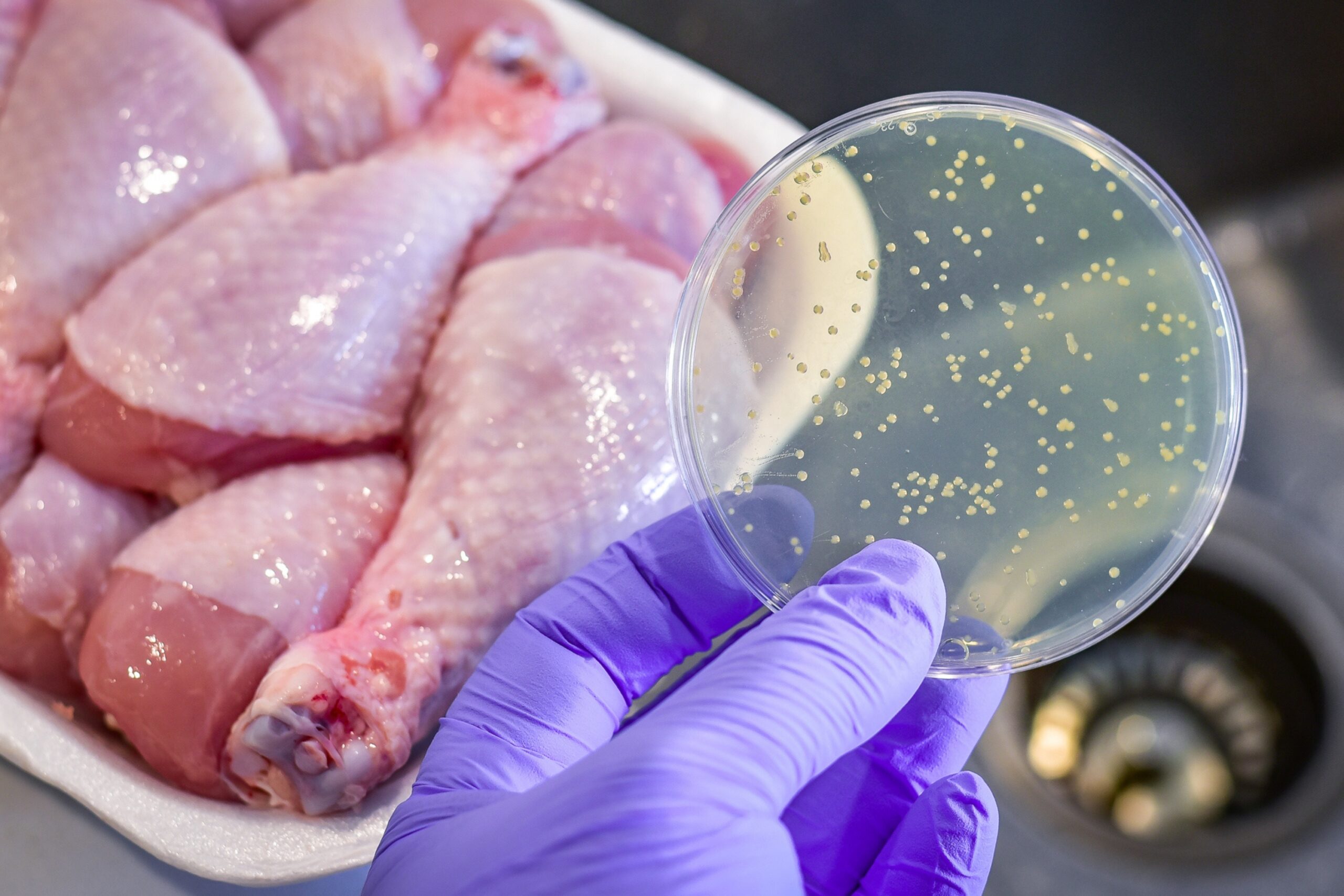How Safe Is US Food? Experts’ Verdicts After Listeria, E. Coli Outbreaks
Food safety remains a pressing concern in the United States—the combination of vast food production networks and complex supply chains creates both opportunities and risks for contamination.
Recently, two notable incidents—a listeria outbreak involving ready-to-eat meat products and an E. coli outbreak tied to McDonald’s—have underscored the need for consistent oversight and stronger preventive measures in food safety.
In October 2024, the CDC reported a listeria outbreak linked to prepackaged meat and chicken products distributed by BrucePac, a food production company based in Oregon.
The contaminated items, estimated to total over 160,000 pounds of meat, included pre-cooked meats such as chicken breasts, turkey, and pork, widely distributed to grocery stores, restaurants, and food service providers.
Listeria monocytogenes, the bacterium responsible, is especially dangerous for vulnerable populations, including older adults, pregnant women, and those with weakened immune systems. In severe cases, listeriosis can lead to invasive symptoms such as meningitis.
The recent outbreak led to several hospitalizations, and health officials have urged consumers to discard any remaining recalled products to prevent further exposure.
In a related case of food safety concern, an E. coli outbreak was linked to onions distributed by a supplier to McDonald’s and other food outlets across several states. The FDA announced the outbreak in October 2024, noting that the contamination involved E. coli O157, a strain known for causing severe gastrointestinal illness.
To address recurring issues like these, the U.S. government has introduced and strengthened various food safety measures in recent years. The FDA Food Safety Modernization Act—FSMA—is designed to enable the FDA to focus on prevention rather than simply responding to contamination after it occurs. It also enhances the FDA’s authority to conduct inspections, mandate recalls, and ensure compliance, aiming to reduce the occurrence of foodborne illnesses in the U.S.
However, while regulations such as FSMA mandate safety plans and regular inspections, experts argue that enforcement remains inconsistent across different levels of the supply chain.
The Trump Administration also weighed in on food safety issues, calling for simplified regulations that, it argued, could boost industry compliance. Yet some critics believed that efforts to reduce regulatory “burdens” might have compromised certain oversight capabilities, potentially undermining food safety efforts.
Newsweek reached out to food safety experts to gain further insights into the state of food safety in the U.S. today.
Manjurul/Getty images
Ken Lee, Ph.D., Academy Professor at the Ohio State University, Director of Food Innovation (Retired), Columbus, Ohio
Killer foods now claim more than 3,000 people each year in the United States alone. Nobody should die from unsafe food.
Consumers, scientists, regulators, and the food industries we depend upon all want an annual body count from bad food to be zero. The food news today is dark, but tomorrow’s food system is bright—an array of innovations that no longer depend on temperature are emerging, such as high pressure, ozone, pulsed electric, aseptic, plasma microwave, and e-beam.
Far too many food illnesses are traced to flaws in preparation. Home or commercial appliances like microwave ovens with safe food settings, refrigerators that identify questionable foods, artificial intelligence that ensures good food, or online process validation for regulators with authority to stop before market, could very well be in our future.
The vast majority of the 1,300 pounds of food the average American consumes each year is quite safe. But about an ounce of that may be contaminated with deadly consequence. The current generation of food innovators will finally end the threat from the one-ounce killer.
Marion Nestle, Professor Emerita of Nutrition, Food Studies, and Public Health, NYU
The issue with food safety is not only down to regulations, but workplace culture. We have pretty good regulations in place. All foods, whether regulated by USDA—meat and poultry—or FDA—pretty much everything else with some exceptions—are supposed to be produced under carefully designed and executed protocols to reduce pathogens.
These plans should be followed diligently and production monitored to make sure they are. When the plans are designed, followed, and monitored properly, the foods should be safe. The problems result from lapses in those protocols, almost always from a company not having established a culture of food safety in which everyone who comes in contact with a food—no exceptions—follows the protocols diligently and takes responsibility for ensuring against lapses.
The caring-about-food-safety culture should begin in the executive suite and extend to the lowest paid workers. When I read about outbreaks, I can guess the owners of the company at fault takes food safety much too casually; their typical statement, “the safety of our customers is our highest priority,” does not reflect the company’s food safety culture at all. We know how to produce safe food; companies just need to do it.
Professor Keith Warriner, Food Safety, Faculty of Food Science, University of Guelph
The North American food system is often quoted as being the safest in the world. The basis for being bestowed this title is related to the centralized production and highly regulated nature of food production within the Food Safety Modernization Act and Safe Food For Canadians Act.
Essentially, the regulations make all food processors to undertake a risk analysis and then put in place process or procedures to control hazards. The regulations also provide a rulebook for inspectors and auditors identify if a food processor is operating good or bad.
So, the regulations and food safety management systems are in place but what is lacking in most cases is the processing facility not applying the plan as written.
It’s analogous to a football team talking about a style of play in the dressing room but then playing totally different in the game. In addition, inspectors may see infractions but fail to follow up to see if they have been corrected.
I believe this was evident in the Boar’s Head outbreak and the Calgary daycare E. coli incident. The North American surveillance system is the best in the world so when an outbreak occurs it is relatively quickly detected. Therefore while North America continually attempts to improve food safety the weakest part is in the application.
Nancy Cohen, PhD, FAND, Professor Emerita, Nutrition, University of Massachusetts Amherst
There are many reasons why a food may be recalled, including presence of undeclared allergens, bacterial contamination, presence of metal or other foreign objects, presence of toxic minerals, or misbranding.
All kinds of processed and raw foods—meats, poultry, seafood, eggs, dairy, fruits, vegetables, grains, nuts, beans—are recalled each year. Yet, overall, the U.S. food supply is very safe. Nevertheless, caution will always be needed when processing and handling foods.
Food is grown in nature and is not sterile, so bacteria can grow and contaminate other foods if not handled properly. Processed foods undergo many steps before they reach the consumer, and care must be taken at each step to avoid or control hazards. Food ingredients can come from across the country or around the globe, reinforcing the need for careful food handling all along the producing, processing, manufacturing and distribution chain.
Despite these expert insights and efforts to advance food safety practices, the recurrence of outbreaks signals that significant work remains. Food safety in the U.S. requires not only stringent regulation and state-of-the-art technologies but also a collective culture of diligence and responsibility across all sectors of the food supply chain.
Amarat Simonne, Professor of Family, Youth, and Community Sciences, University of Florida Institute of Food and Agricultural Sciences
Food safety is complex, and it involves every sector from producers to consumers. Based on data—which is ever-changing—while foods in the U.S. are safe, we still must do work to keep key foodborne illnesses at bay.







